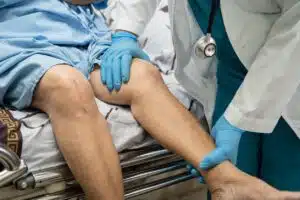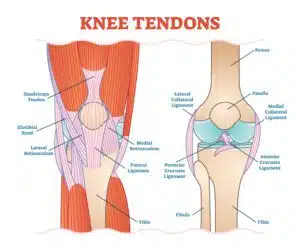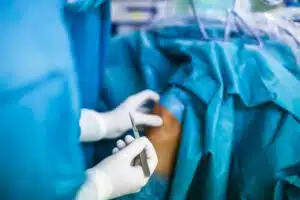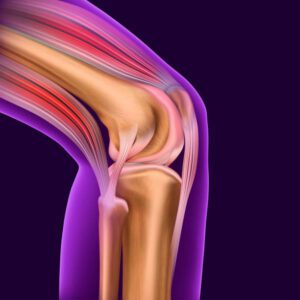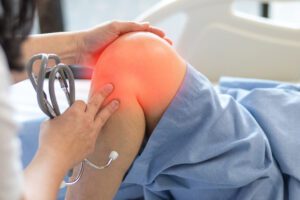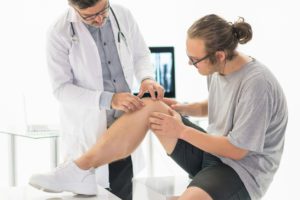Minimally invasive knee surgery is an innovation that offers a range of benefits over traditional open surgery. Through it, orthopedic surgeons can replace part or the entire knee joint without needing to make a large incision. They can also make repairs to damaged ligaments in the knee, resulting in less post-operative pain for the patient,…
Knee
A Comprehensive Guide to Treating Bursitis Knee
Our knee has small fluid-filled sacs that ensure less friction between the parts of the knee joints, like skin and tendon, and tendon and bone. These sacs are called bursae. Excessive pressure on these sacs – either from a direct blow or repetitive use – causes inflammation and swelling of the bursae, a condition known…
Tips for Managing Knee Tendonitis
Knee tendonitis or jumper’s knee is when the tendon of the knee that connects your kneecap(patella) to the top of your shinbone(tibia), gets inflamed and becomes painful. Repetitive movements of your knee joint, as in some sports, like basketball and volleyball,that involve jumping, can irritate the knee tendon, leading to knee tendonitis. This means athletes…
How to Prepare for Knee Surgery
Knee surgery encompasses many different types of procedures, from knee ligament construction to knee replacement. Whichever type of knee procedure you are undergoing, you need to do some preparation for the day, and the following days, weeks, or months that you will be in recovery. Before your scheduled knee surgery, the orthopedic surgeon should discuss…
How Does Knee Tendonitis Happen?
Knee tendonitis is one of the most common knee injuries that you can develop as an athlete during sports or as someone with an active lifestyle. Knee tendonitis, also known as “Jumper’s knee” and patellar tendonitis, is the inflammation of your knee tendon that links your kneecap (patella) to your shinbone (tibia). Let’s talk about…
What aggravates bursitis of the knee?
Bursitis of the knee is a condition that results from inflammation of one or more bursae in the knee. Bursae are small, fluid-filled sacs located near the large joints throughout the body that act as cushions and help reduce friction between soft tissues. The knee has several bursae, and when they are inflamed, they cause…
Reasons For Knee Pain After Arthroscopy
After arthroscopic knee surgery, most patients can return to normal daily activities within a few days. However, people who undergo a knee arthroscopy may have a variety of diagnoses and preexisting conditions. As a result, each patient’s arthroscopic surgery is unique. Knee arthroscopies are minimally-invasive operations with minimal complication risks; however, you may experience knee…
Bursitis Knee Treatments, What You Should Know
While not as common as its close relative (arthritis), bursitis can also affect the knee and other major joints in the body and produce symptoms that can be just as debilitating. The condition occurs when one or more of the small fluid-filled sacs (bursae)— which cushion the gliding surfaces of the structures (bones, muscles, and…
Can Knee Bursitis Cause Other Problems?
Being the body’s most complex joint and also one of the most-used joints, the knee is highly susceptible to pain and injury. Some of the most common knee injuries are arthritis, a torn ACL (anterior cruciate ligament), and bursitis. Bursitis is an inflammatory condition that affects the small protective sacs around the joints called bursae…
Risks and Complications of Knee Arthroscopy Surgery
When the word “surgery” comes to mind, most people think of traditional open surgeries. However, arthroscopy is a procedure that is less invasive and uses a relatively tiny incision. Patients who undergo arthroscopic knee surgery can expect an outpatient procedure with a short recovery period. However, as with any surgery, there may be risks and…

